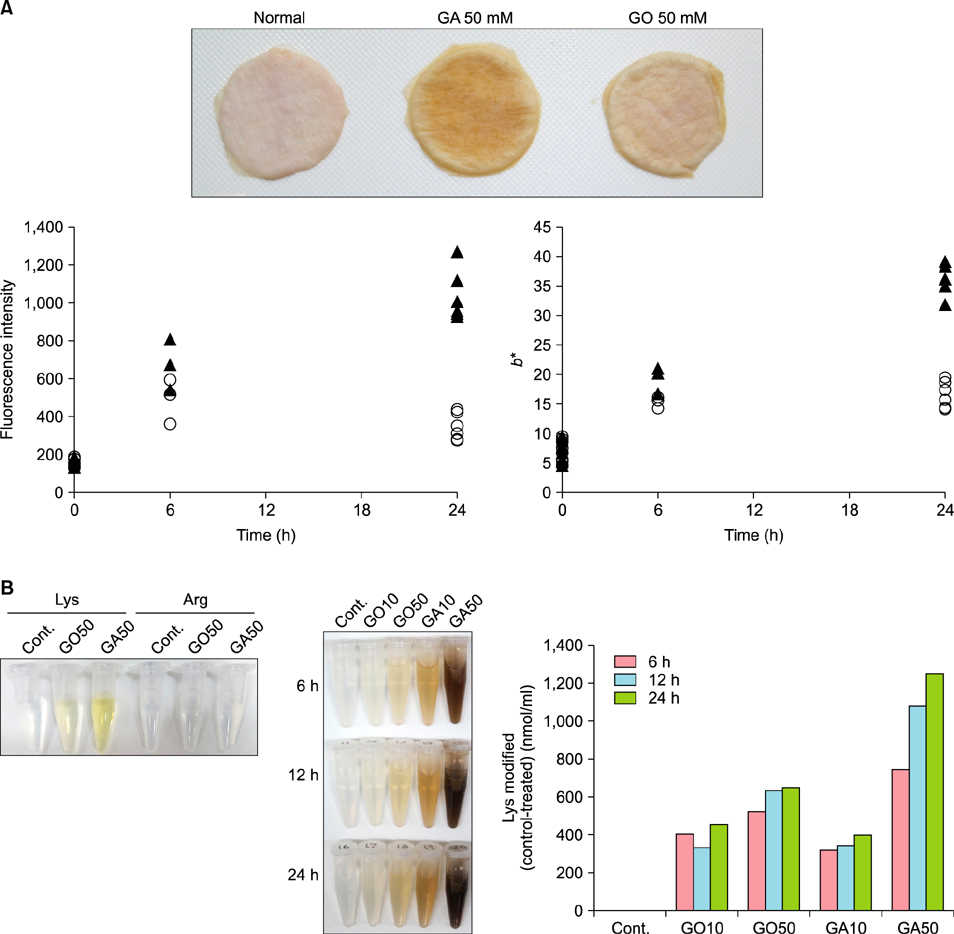Ann Dermatol.
2017 Aug;29(4):508-511. 10.5021/ad.2017.29.4.508.
Glyceraldehyde-Derived Advanced Glycation End Products Accumulate Faster Than N(ε)-(Carboxymethyl) Lysine
- Affiliations
-
- 1Laboratory of Dermatological Physiology, Faculty of Pharmaceutical Sciences, Josai University, Saitama, Japan. tokudome@josai.ac.jp
- 2School of Bioscience and Biotechnology, Tokyo University of Technology, Tokyo, Japan.
- 3Department of Advanced Medicine, Medical Research Institute, Kanazawa Medical University, Ishikawa, Japan.
- KMID: 2388959
- DOI: http://doi.org/10.5021/ad.2017.29.4.508
Abstract
- No abstract available.
Figure
Reference
-
1. Gkogkolou P, Böhm M. Advanced glycation end products: Key players in skin aging? Dermatoendocrinol. 2012; 4:259–270.2. Zhu P, Ren M, Yang C, Hu YX, Ran JM, Yan L. Involvement of RAGE, MAPK and NF-κB pathways in AGEs-induced MMP-9 activation in HaCaT keratinocytes. Exp Dermatol. 2012; 21:123–129.
Article3. Miura J, Yamagishi Si, Uchigata Y, Takeuchi M, Yamamoto H, Makita Z, et al. Serum levels of non-carboxymethyllysine advanced glycation endproducts are correlated to severity of microvascular complications in patients with Type 1 diabetes. J Diabetes Complicat. 2003; 17:16–21.
Article4. Takino J, Yamagishi S, Takeuchi M. Cancer malignancy is enhanced by glyceraldehyde-derived advanced glycation end-products. J Oncol. 2010; 2010:739852.
Article5. Abe R, Shimizu T, Sugawara H, Watanabe H, Nakamura H, Choei H, et al. Regulation of human melanoma growth and metastasis by AGE-AGE receptor interactions. J Invest Dermatol. 2004; 122:461–467.
Article6. Takeuchi M, Makita Z, Bucala R, Suzuki T, Koike T, Kameda Y. Immunological evidence that non-carboxymethyllysine advanced glycation end-products are produced from short chain sugars and dicarbonyl compounds in vivo. Mol Med. 2000; 6:114–125.
Article7. Kawabata K, Yoshikawa H, Saruwatari K, Akazawa Y, Inoue T, Kuze T, et al. The presence of N(ε)-(Carboxymethyl) lysine in the human epidermis. Biochim Biophys Acta. 2011; 1814:1246–1252.
Article8. Park HY, Kim JH, Jung M, Chung CH, Hasham R, Park CS, et al. A long-standing hyperglycaemic condition impairs skin barrier by accelerating skin ageing process. Exp Dermatol. 2011; 20:969–974.
Article
- Full Text Links
- Actions
-
Cited
- CITED
-
- Close
- Share
- Similar articles
-
- The Role of Advanced Glycation End Products in Diabetic Vascular Complications
- Letter: The Association between Serum Endogenous Secretory Receptor for Advanced Glycation End Products and Vertebral Fractures in Type 2 Diabetes (Endocrinol Metab 2012;27:289-94, Cheol Ho Lee et al.)
- N epsilon(Carboxymethyl)Lysine-Induced Mesangial Cell Activation
- Inhibition of advanced glycation end product formation by burdock root extract
- Response: The Association between Serum Endogenous Secretory Receptor for Advanced Glycation End Products and Vertebral Fractures in Type 2 Diabetes (Endocrinol Metab 2012;27:289-94, Cheol Ho Lee et al.)



